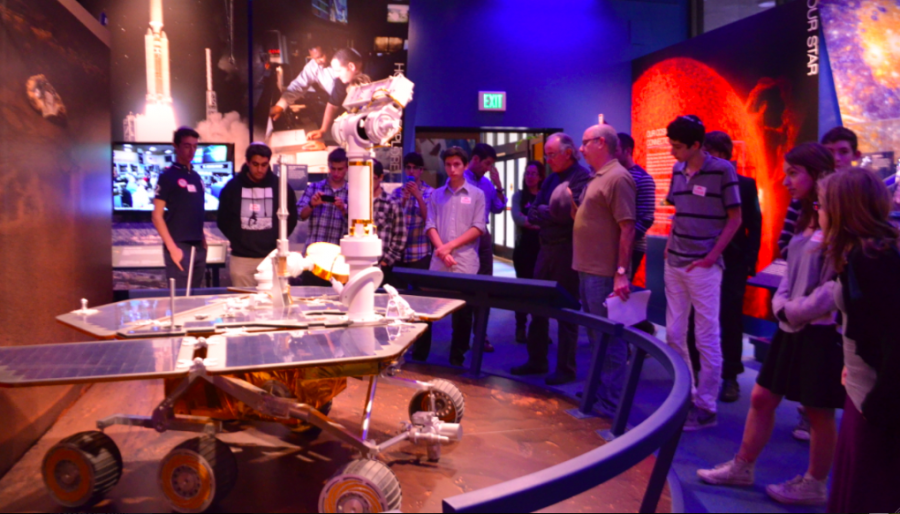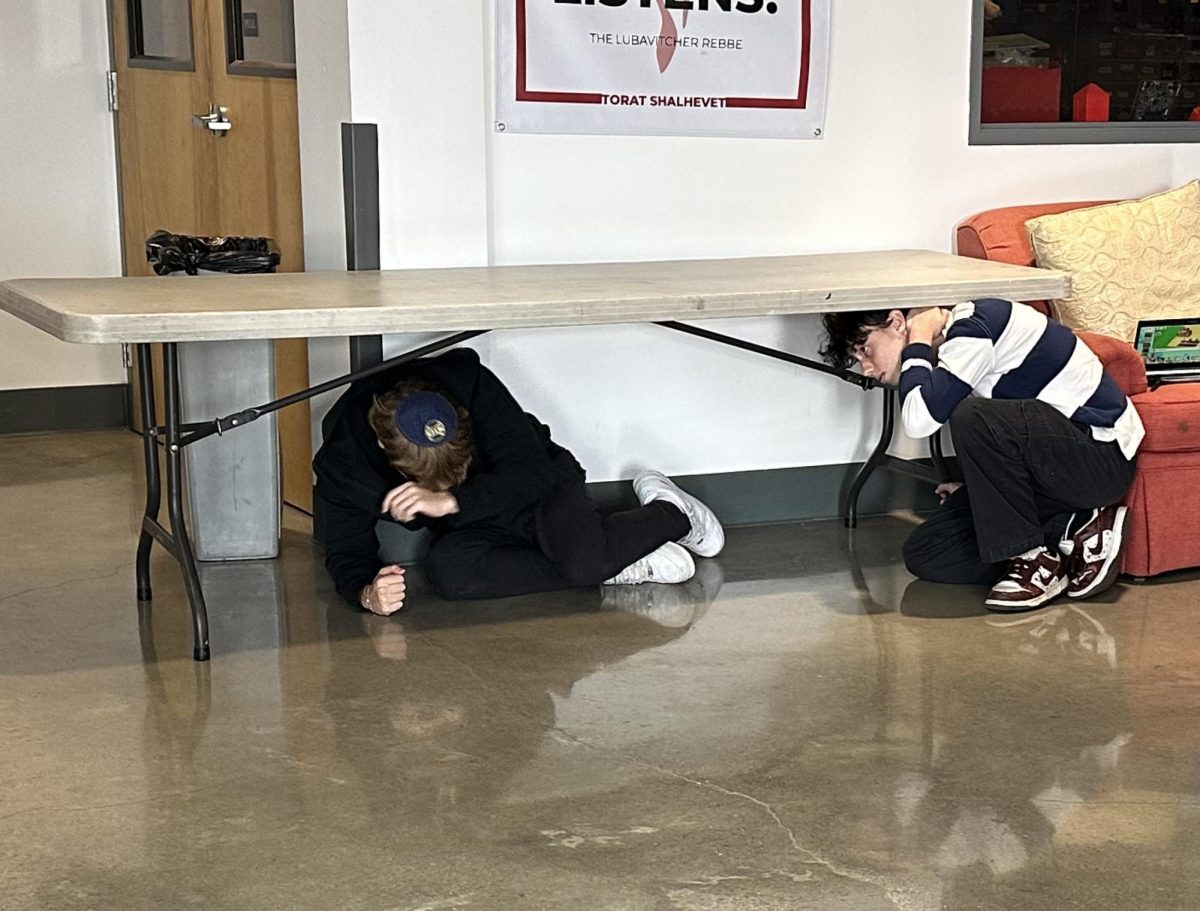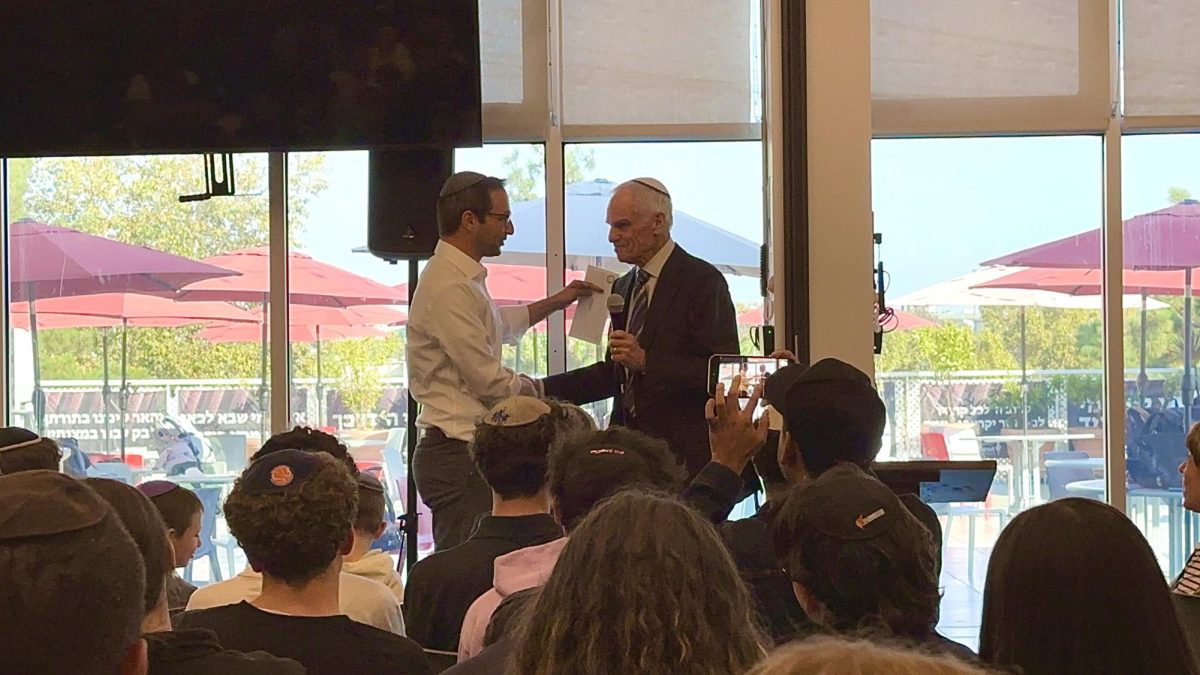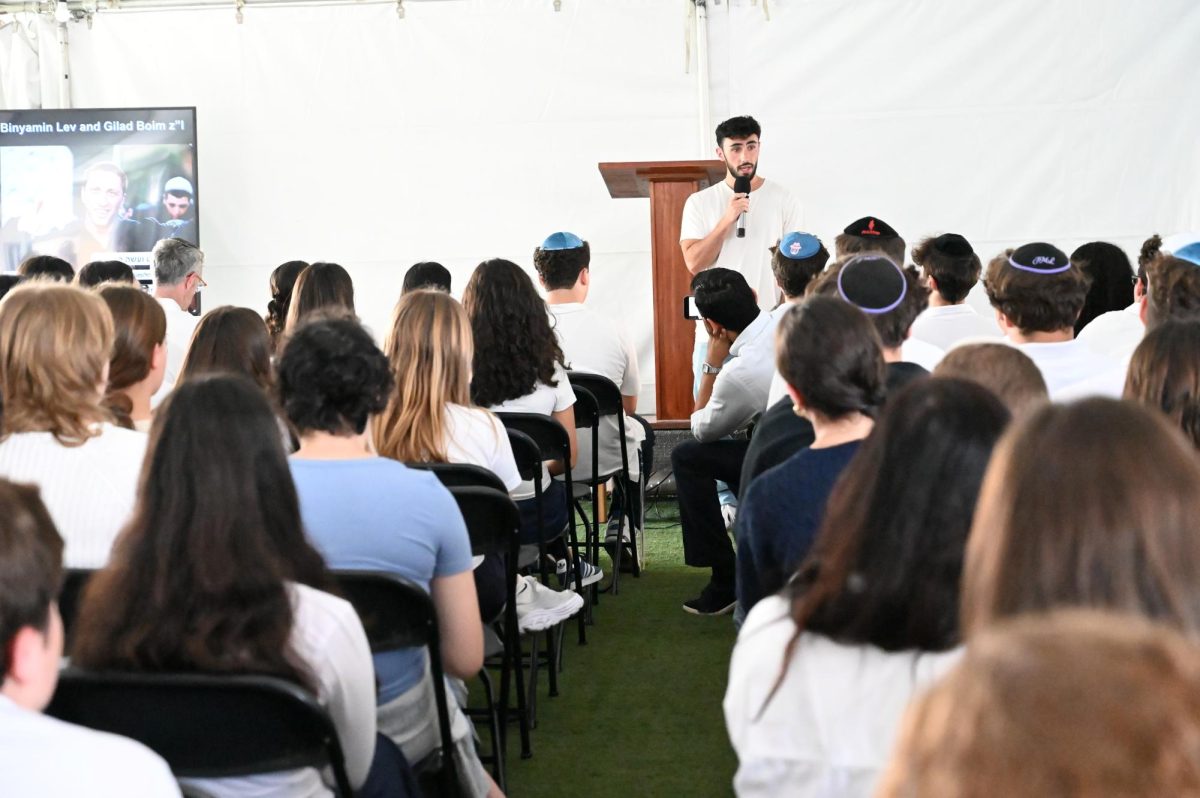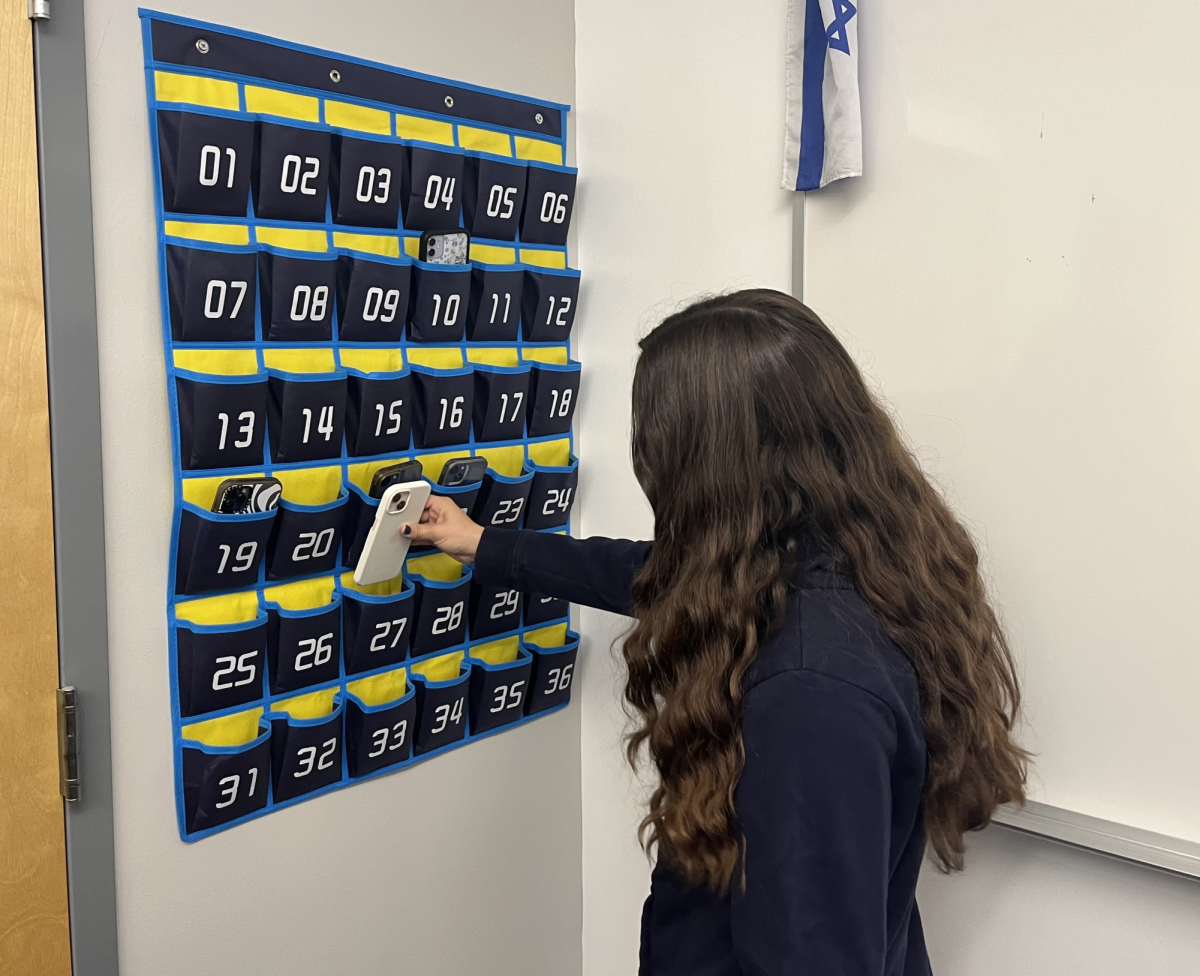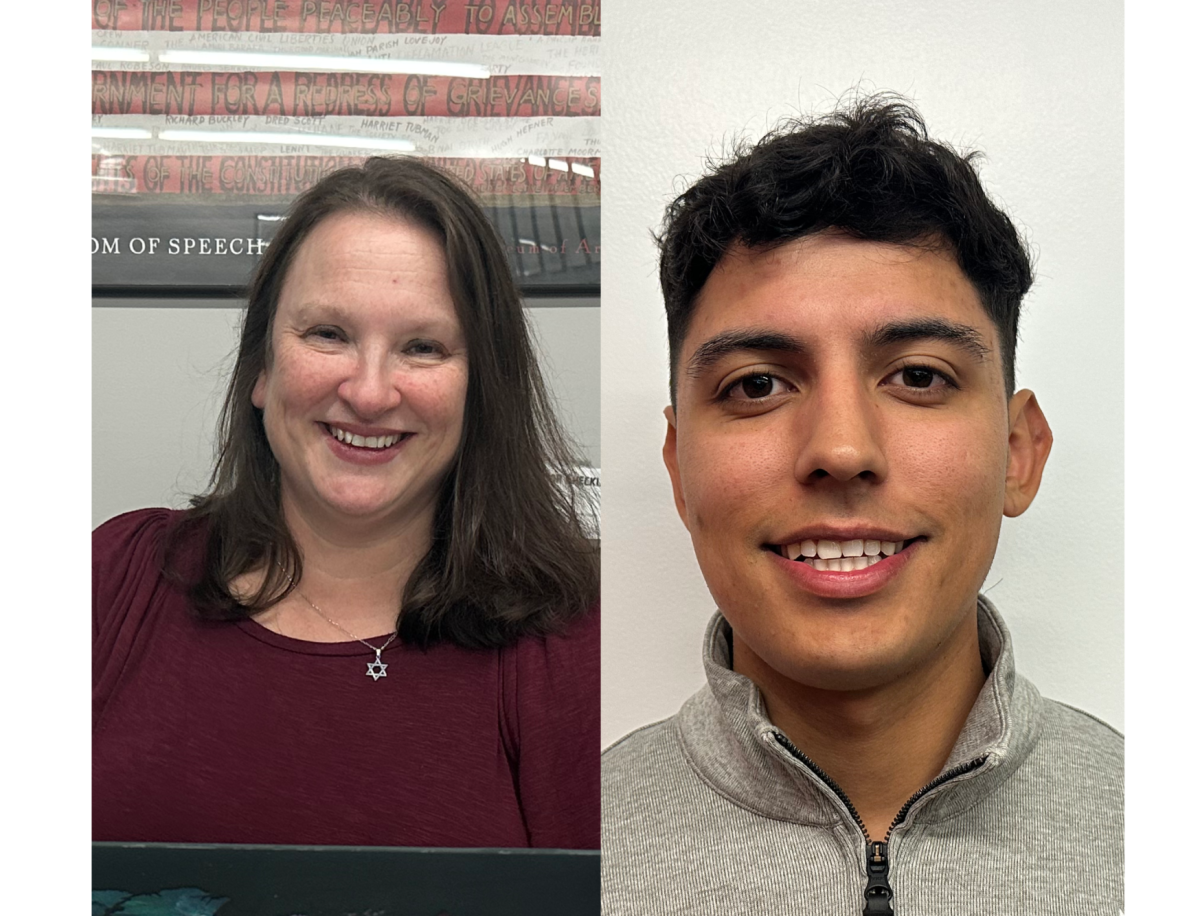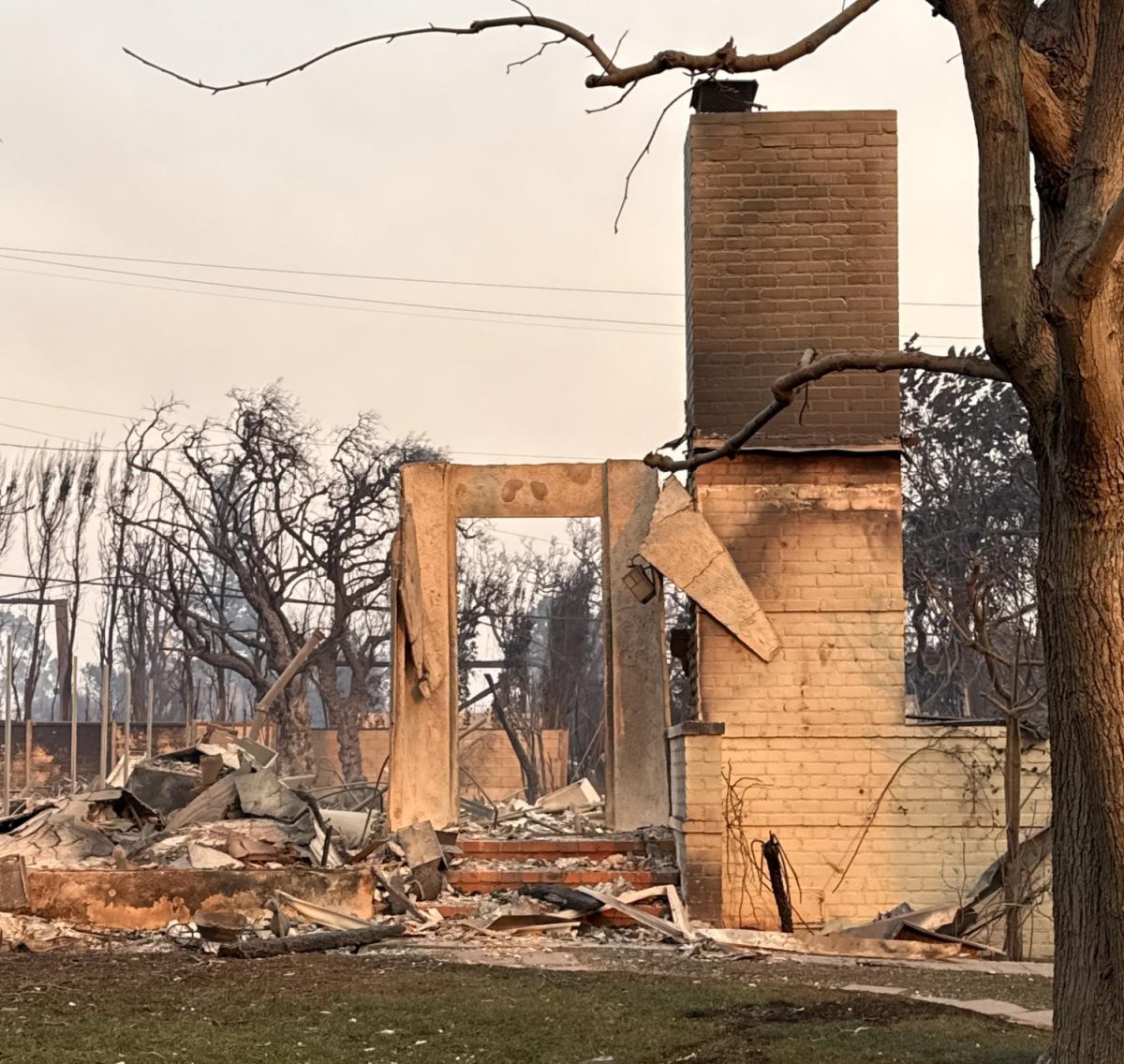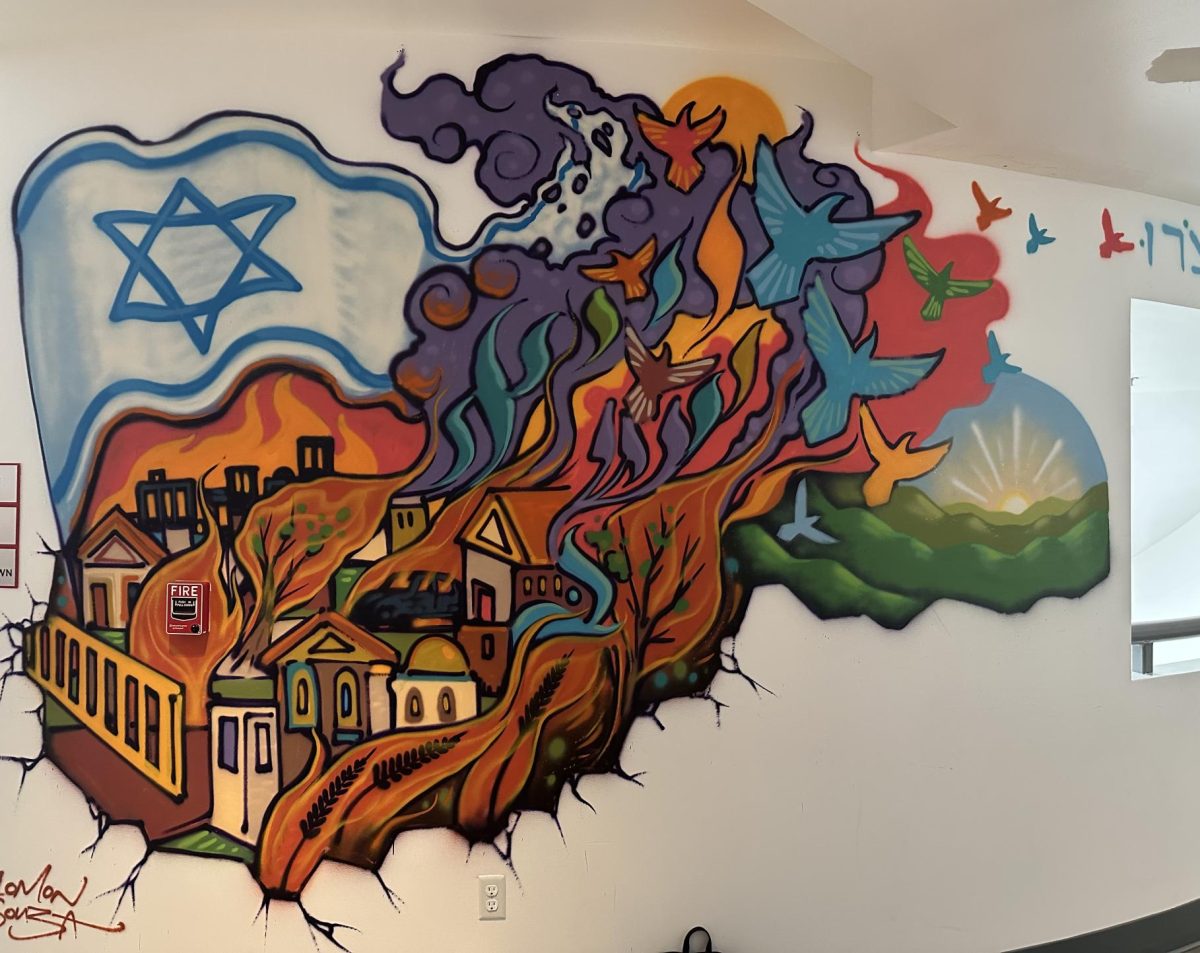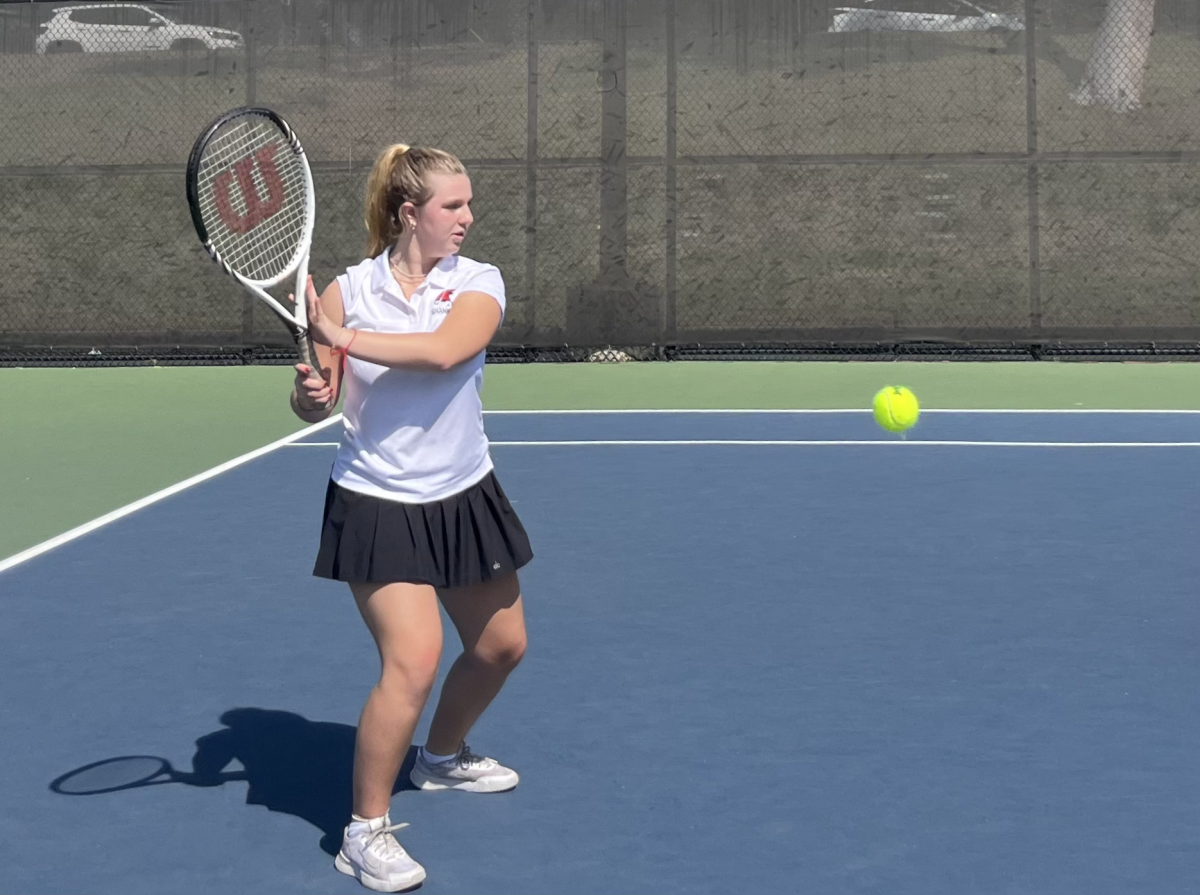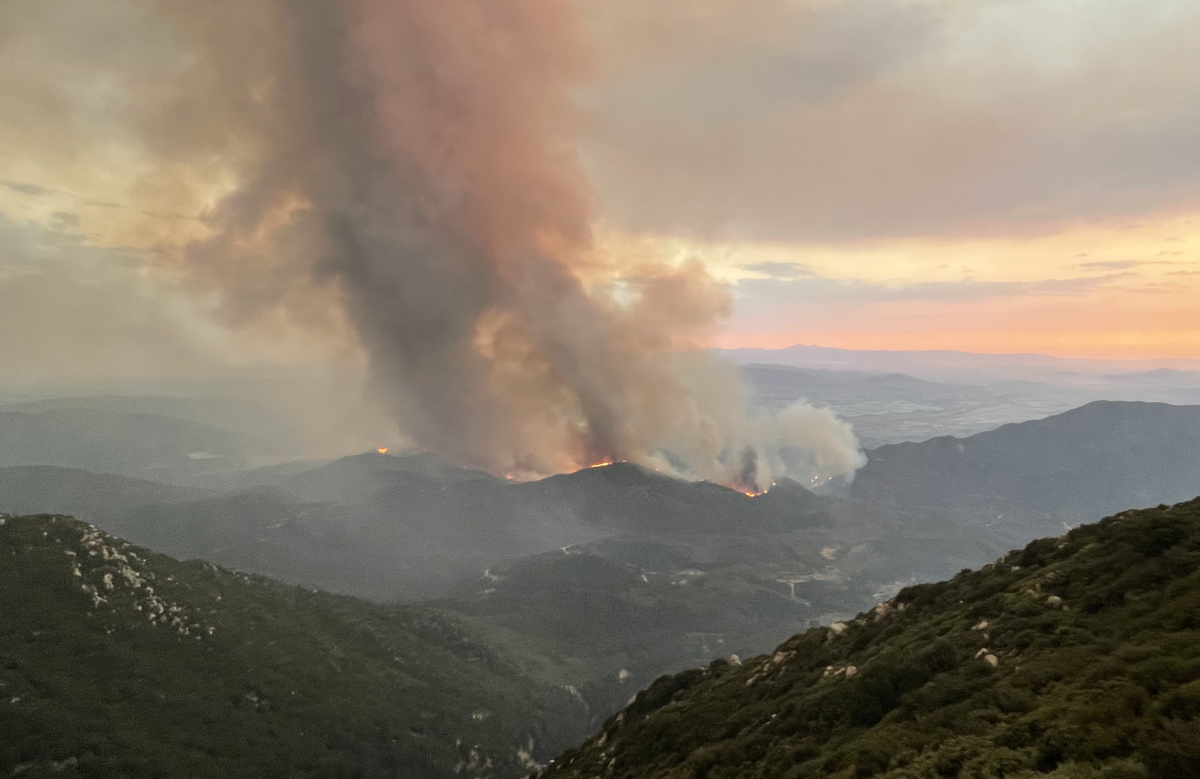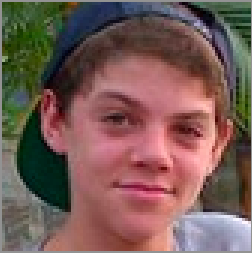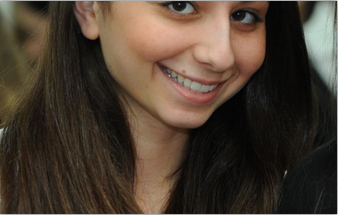When engineers at the Jet Propulsion Laboratory in Pasadena received clearance Dec. 4 to send a new rover to Mars in 2020, the Shalhevet Robotics Team was at the scene.
The news happened to break during the new club’s first field trip, a Tuesday visit to the Mars Rover Lab, arranged by Dr. Gabriel Danovitch, General Studies Principal Mr. Roy Danovitch’s father.
“Ooh!” said Jeffrey Weiss, an engineer at JPL who was leading the tour.
“This is the biggest news since Curiosity landed in August!”
He then explained to the students what JPL’s president had just informed everyone through a mass email. The newest model will be equipped with a return vehicle to bring back samples from the Mar’s surface to NASA.
“These results will hopefully drastically progress the research going on at JPL,” Mr. Weiss said later, as he was showing them the prototype of the future rover.
The news thrilled JPL employees throughout the verdant campus, as the Shalhevet students could see during a tour that started at around 12:30 pm and ended at 4:00. In addition to Mr. Weiss, Shalhevet’s group was led by John Callas, project manager of the Mars Exploration Rover Project – perhaps the most famous robotics project in the world.
Students walked about five minutes from the Visitors’ Center to the Spacecraft Assembly Facility, which houses rooms where designs are tested and parts are built. Sights along the way included a “clean room” where space parts are built.
They weren’t able to enter the rooms because the air had to be kept clean to make sure that Mars is not contaminated with particles or organisms from earth. But from the wide-eyed look on their faces they seemed amazed at the sight of the actual builders building the parts that were poised for Mars.
Later, they saw a working duplicate of the Curiosity rover that landed on Mars last summer, and a prototype model of the original Space Shuttle, along with detailed explanations of Curiosity and two previous interplanetary missions, Opportunity and Galileo.
Opportunity has been active on Mars since 2004, and Galileo has orbited Jupiter. Explaining the history of Mars exploration, Mr. Callas said Opportunity was sent to Mars in 2003 expected to be active on the planet for just a few weeks. Instead it is still working today, and has covered more than 35,000 meters, or 22 miles.
“We design things for a worst case situation,” said Jeff. “Wind has been blowing some of the dust of the surface allowing the rover to move with an incredible amount of ease. That’s the main reason that the rover has lasted so long.”
He continued to explain that Opportunity is equipped with a six-wheel drive, solar powers, a robotic arm and more than 10 cameras, along with many other features.
After the Mars Rover replica, the students looked at a full-size copy of Galileo, the spacecraft orbiting Jupiter. It has orbited all four of Jupiter’s moons and was the first super craft to orbit the planet.
“It was amazing to stare at some of the most advanced technology of the 21st century with all of my students” said Judaic Studies teacher Rabbi David Stein, who is a trained engineer and is also the Robotics Club’s advisor.
He said the next project for the new club would be to begin building its own robot.
“Our parts just arrived,” Rabbi Stein said Jan. 7. “Our main focus right now is to produce an amazing robot for an upcoming competition.”

